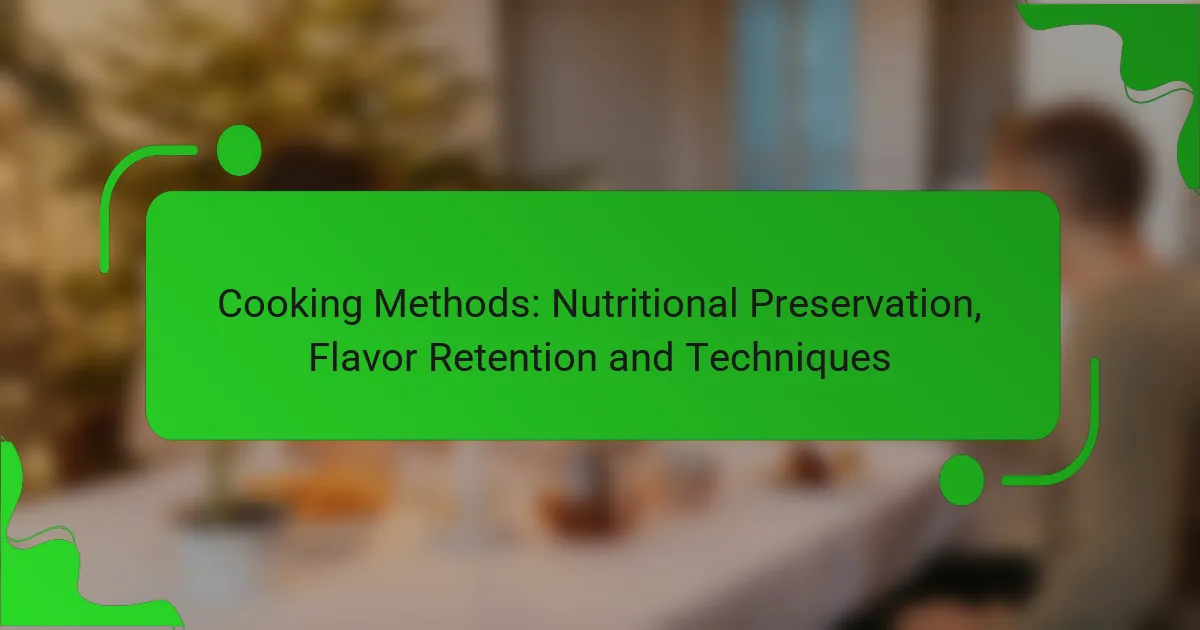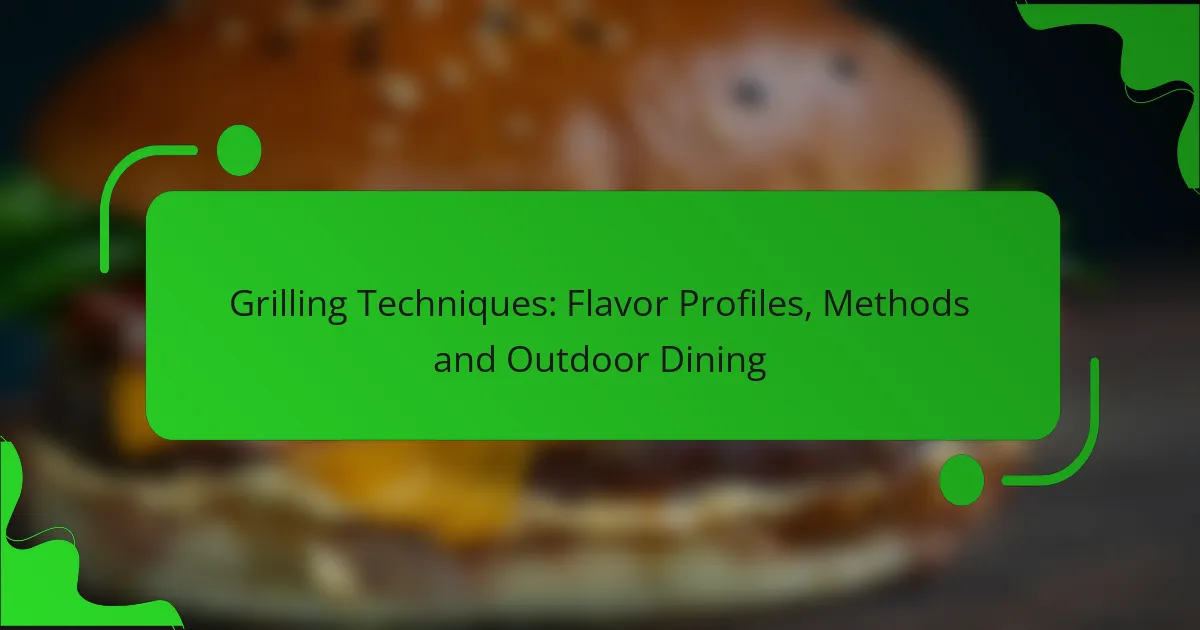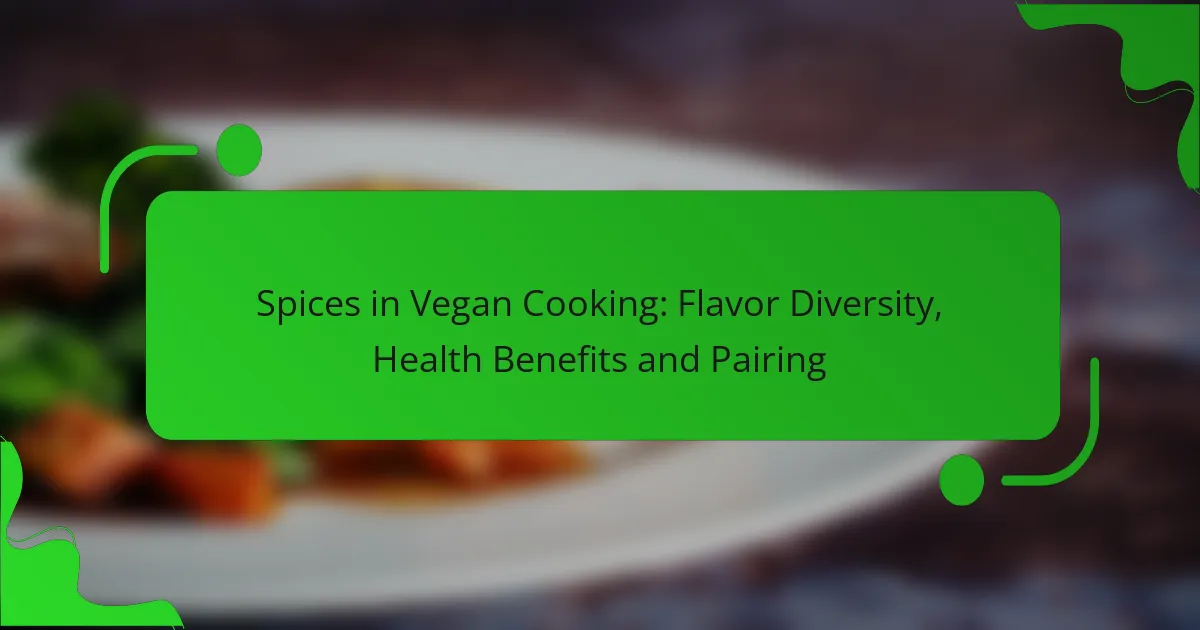Sous vide cooking is a revolutionary technique that offers unparalleled precision in temperature control, resulting in perfectly cooked meals that enhance flavor and texture. By using an immersion circulator and vacuum-sealed bags, both chefs and home cooks can achieve consistent, restaurant-quality results with ease. This method is particularly beneficial for beginners, as simple recipes like steak, vegetables, and eggs allow for mastery of essential skills while delivering impressive outcomes.
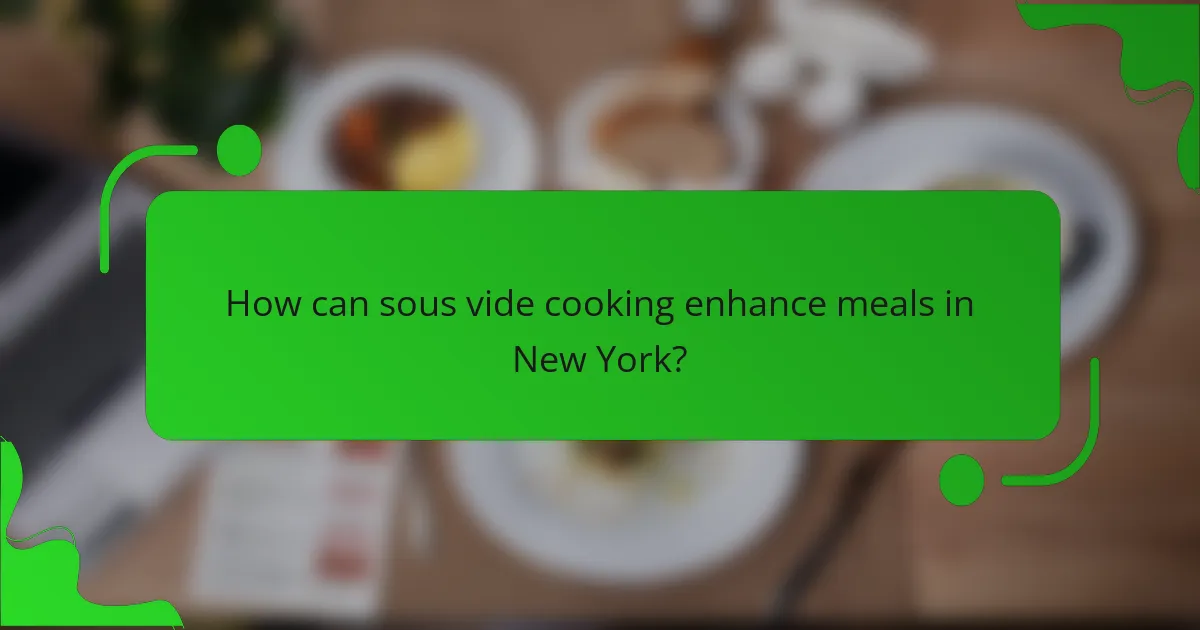
How can sous vide cooking enhance meals in New York?
Sous vide cooking can significantly enhance meals in New York by providing precise temperature control, resulting in perfectly cooked dishes. This method allows chefs and home cooks alike to achieve consistent results that elevate the overall dining experience.
Consistent cooking temperatures
Sous vide cooking relies on immersing food in a water bath at a controlled temperature, ensuring that every part of the dish cooks evenly. This technique minimizes the risk of overcooking, which is particularly beneficial for proteins like steak or chicken, where a few degrees can make a substantial difference in doneness.
When using sous vide, set your immersion circulator to the desired temperature, typically ranging from 55°C to 65°C for meats. This precision allows for repeatable results, making it easier to serve perfectly cooked meals every time.
Improved texture and tenderness
The sous vide method enhances the texture and tenderness of food by cooking it slowly over an extended period. This gentle cooking process breaks down tough connective tissues in meats, resulting in a melt-in-your-mouth experience that traditional cooking methods often cannot achieve.
For instance, cooking a brisket sous vide for 24 to 48 hours at around 60°C can transform a tough cut into a tender, flavorful dish. This technique is particularly effective for cuts that benefit from long cooking times, allowing flavors to develop fully while maintaining moisture.
Flavor infusion through vacuum sealing
Vacuum sealing food before sous vide cooking allows for intense flavor infusion. As food cooks in its own juices, the sealed environment helps to concentrate flavors, making herbs and spices more potent and enhancing the overall taste of the dish.
For optimal flavor, consider marinating proteins before sealing them in a bag. This can significantly elevate the taste, especially when using bold ingredients like garlic, rosemary, or citrus. Aim for a marinating time of at least 30 minutes to several hours, depending on the protein type.
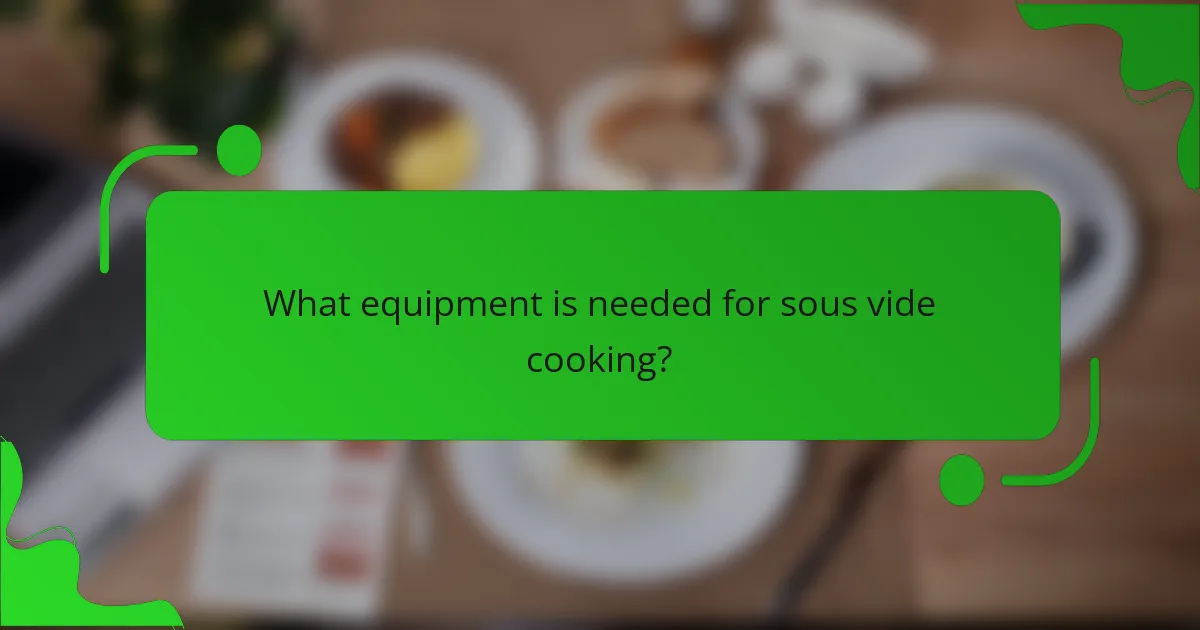
What equipment is needed for sous vide cooking?
To successfully engage in sous vide cooking, you need a few essential pieces of equipment that ensure precision and quality. The primary tools include an immersion circulator, a vacuum sealer with bags, and a suitable water bath container.
Sous vide immersion circulator
An immersion circulator is the heart of sous vide cooking, responsible for heating and circulating water to a precise temperature. When selecting a circulator, consider its temperature range, accuracy, and capacity, as these factors will affect your cooking results.
Most immersion circulators are user-friendly and can be controlled via a digital interface or smartphone app. Look for models that offer features like timers and programmable settings to enhance your cooking experience.
Vacuum sealer and bags
A vacuum sealer is crucial for removing air from bags that hold your food, which prevents oxidation and ensures even cooking. Choose a vacuum sealer that fits your kitchen space and budget, as prices can vary widely.
Use high-quality vacuum bags that are designed for sous vide cooking, as they can withstand high temperatures without leaching harmful chemicals. Ensure the bags are compatible with your sealer for optimal results.
Water bath container
The water bath container holds the water and food during cooking. You can use a dedicated sous vide container or a large pot, but ensure it is deep enough to accommodate the immersion circulator and the food without overflow.
Consider using a container with a lid to minimize water evaporation during long cooking sessions. Insulated containers can help maintain temperature stability, which is essential for consistent sous vide results.
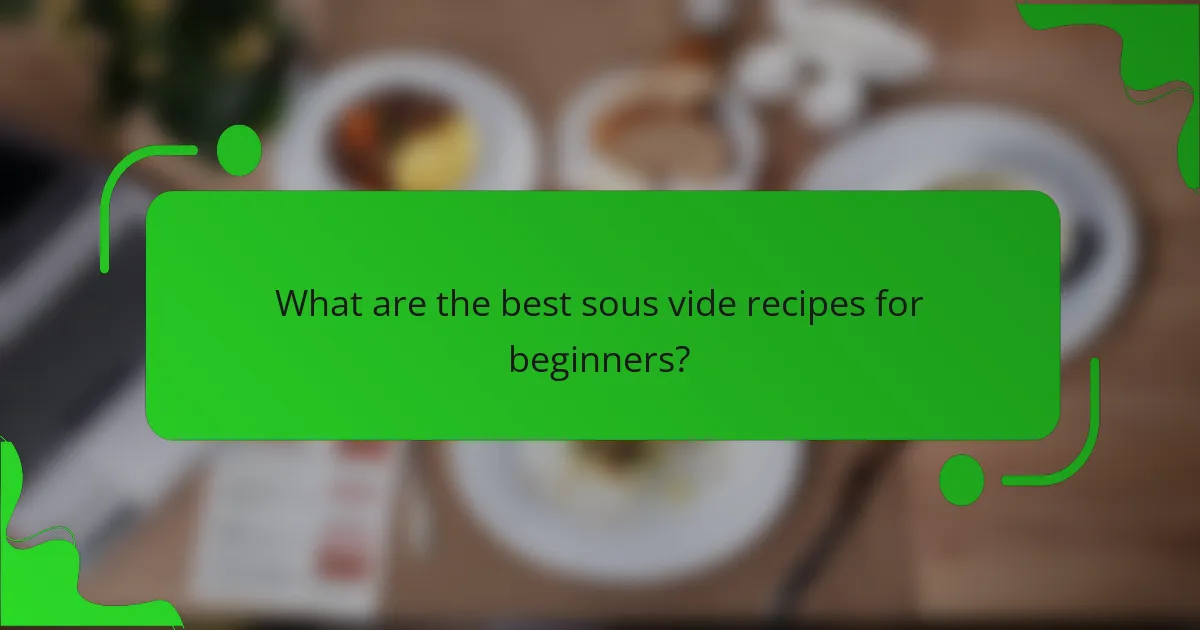
What are the best sous vide recipes for beginners?
For beginners, the best sous vide recipes focus on simple techniques and ingredients that yield impressive results. Steak, vegetables, and eggs are ideal starting points, as they allow you to master temperature control and timing while enhancing flavor and texture.
Sous vide steak
Sous vide steak is a favorite among beginners due to its straightforward process and delicious outcome. Start by seasoning your steak with salt and pepper, then vacuum-seal it in a bag. Cook it in a water bath at a temperature between 54°C to 60°C (130°F to 140°F) for one to four hours, depending on your desired doneness.
After cooking, quickly sear the steak in a hot pan for a minute on each side to develop a flavorful crust. This method ensures a perfectly cooked steak with consistent doneness from edge to edge, making it a foolproof choice for novice cooks.
Sous vide vegetables
Sous vide vegetables retain their nutrients and flavor, making them a great addition to any meal. Common choices include carrots, asparagus, and potatoes. For most vegetables, set your sous vide machine to around 85°C (185°F) and cook for 30 to 90 minutes, depending on their thickness.
Season the vegetables with herbs, spices, or a drizzle of olive oil before sealing them in a bag. This technique allows for rich flavor infusion while maintaining a crisp texture, which can be difficult to achieve with traditional cooking methods.
Sous vide eggs
Sous vide eggs are incredibly versatile and can be cooked to various consistencies. For a soft-boiled effect, set your sous vide to 63°C (145°F) and cook the eggs for about 45 minutes. This results in a creamy yolk and tender whites, perfect for breakfast or as a topping for salads.
For scrambled eggs, whisk them with a bit of cream and seasonings, then cook in a sealed bag at 75°C (167°F) for around 30 minutes. This method yields fluffy, custard-like eggs that are a delightful twist on a classic dish.
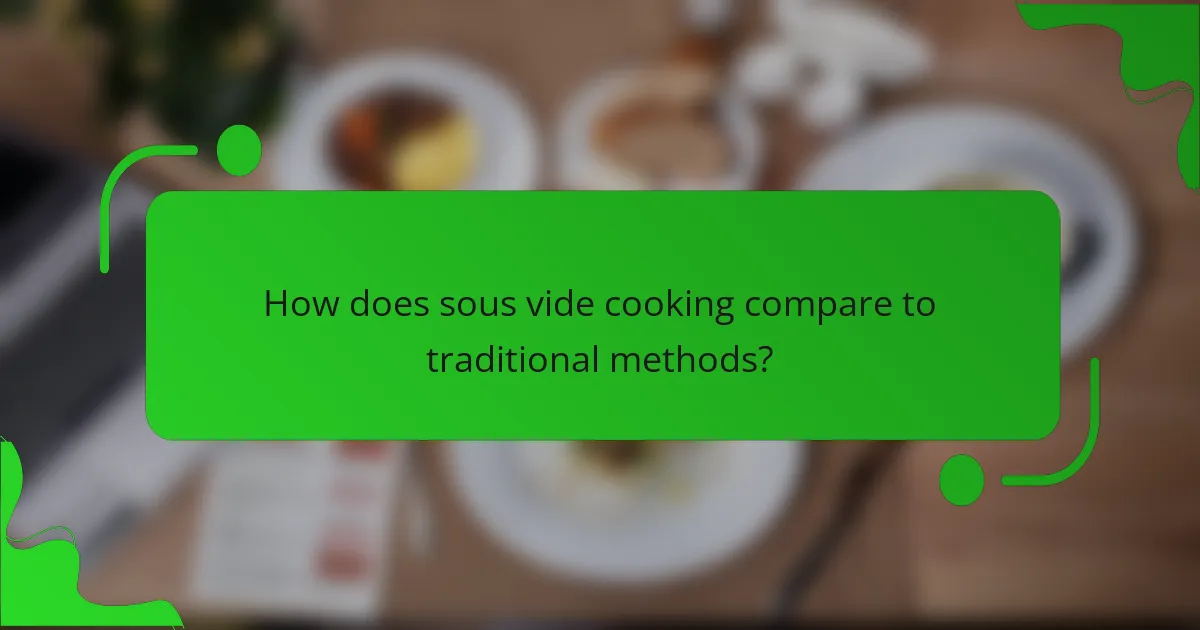
How does sous vide cooking compare to traditional methods?
Sous vide cooking offers a distinct advantage over traditional methods by providing precise temperature control, which enhances the overall cooking process. This technique allows for consistent results and improved texture, making it a preferred choice for many chefs and home cooks alike.
Precision in cooking
Sous vide cooking involves sealing food in a vacuum bag and immersing it in a water bath at a carefully controlled temperature. This method ensures that food is cooked evenly throughout, eliminating the guesswork often associated with traditional cooking techniques. For example, cooking a steak at 54°C (129°F) for one to three hours guarantees a perfectly medium-rare result.
In contrast, traditional methods can lead to uneven cooking due to varying heat distribution. With sous vide, the temperature remains constant, allowing for precise control over the doneness of the food.
Less risk of overcooking
One of the main benefits of sous vide cooking is the significantly reduced risk of overcooking. Since food is cooked at lower temperatures for extended periods, it can be left unattended without fear of drying out or becoming tough. For instance, a chicken breast cooked sous vide at 65°C (149°F) for one to two hours remains juicy and tender, whereas traditional methods might easily lead to overcooked, dry meat.
To maximize this benefit, set a timer and ensure the food is submerged properly. This way, you can achieve perfect results without constant monitoring.
Flavor retention
Sous vide cooking excels in flavor retention due to the vacuum-sealed environment, which prevents the loss of juices and aromas. Unlike traditional methods where moisture can evaporate, sous vide keeps all the flavors locked in, resulting in a more intense taste experience. For example, marinating fish before sous vide cooking enhances its flavor without the risk of dilution.
Additionally, the low-temperature cooking process allows for the gradual infusion of flavors from herbs and spices, creating a depth of taste that is often hard to achieve with conventional techniques. This makes sous vide an excellent choice for preparing flavorful dishes with minimal effort.
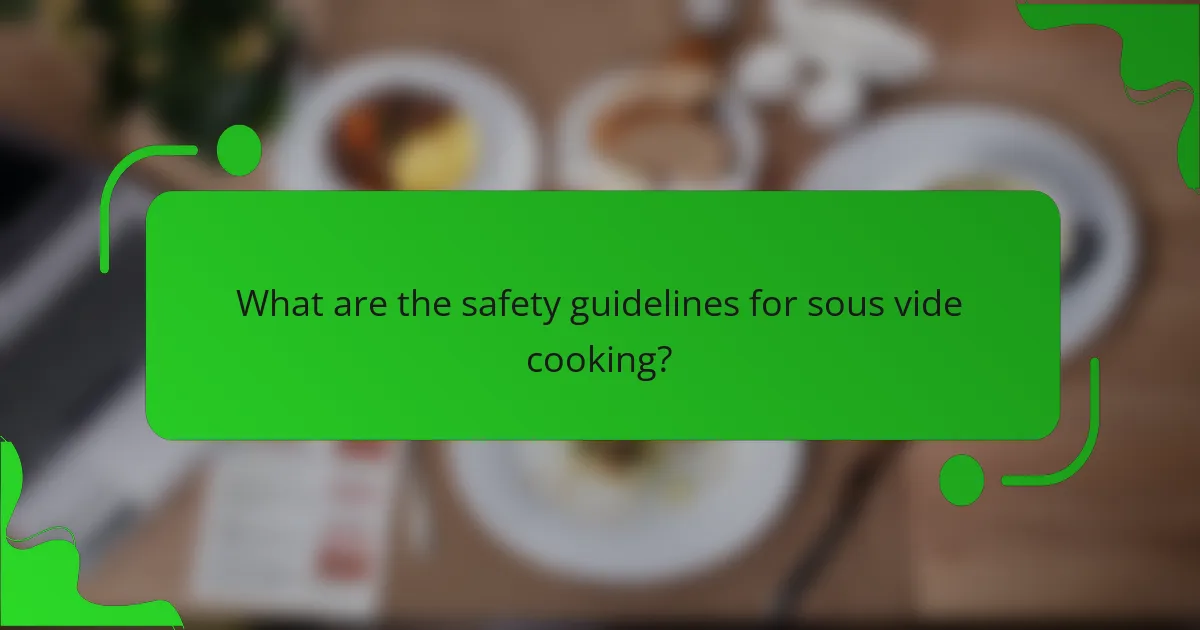
What are the safety guidelines for sous vide cooking?
To ensure safe sous vide cooking, it is crucial to follow specific guidelines regarding temperature, time, and sealing methods. Adhering to these practices minimizes the risk of foodborne illnesses and ensures optimal flavor and texture.
Temperature control
Maintaining the correct temperature is vital in sous vide cooking to eliminate harmful bacteria. Generally, cooking at temperatures between 55°C and 85°C (131°F to 185°F) is effective, depending on the type of food. For example, poultry should be cooked at a minimum of 65°C (149°F) for safety.
Using a reliable immersion circulator helps achieve precise temperature control. Regularly calibrate your device to ensure accuracy, as even slight deviations can impact food safety.
Time limits for food safety
Time limits are just as important as temperature in sous vide cooking. While sous vide allows for longer cooking times, certain foods must not exceed specific durations to prevent bacterial growth. For instance, cooking chicken at 65°C (149°F) should not exceed 2 hours for safety.
Refer to established guidelines for sous vide cooking times, which vary based on food type and thickness. Always err on the side of caution and consult reliable resources for recommended cooking times.
Proper sealing techniques
Effective sealing techniques are essential to prevent water from entering the food package and to ensure even cooking. Vacuum sealing is the preferred method, as it removes air and minimizes the risk of spoilage. If vacuum sealing is not an option, consider using heavy-duty zip-top bags with the water displacement method.
Ensure that the bags are sealed tightly and check for leaks before submerging them in the water bath. This prevents contamination and maintains the integrity of the food during the cooking process.

How can sous vide cooking be integrated into meal prep services?
Sous vide cooking can enhance meal prep services by providing consistent quality, precise cooking times, and the ability to prepare meals in advance. This method allows for better flavor infusion and texture, making it an ideal choice for both home cooks and professional meal prep businesses.
Batch cooking for efficiency
Batch cooking with sous vide allows meal prep services to cook large quantities of food simultaneously, optimizing time and energy use. By sealing multiple portions in vacuum bags, cooks can prepare proteins, vegetables, and grains all at once, reducing the overall cooking time significantly.
This method is particularly useful for services that cater to busy clients, as it enables the production of multiple meals that can be stored and reheated easily. For instance, cooking chicken breasts sous vide can yield perfectly tender results in about 1 to 2 hours, ready for quick assembly into various dishes.
Customizable meal options
Sous vide cooking offers meal prep services the flexibility to create customizable options tailored to individual dietary needs. Customers can choose from a variety of proteins, vegetables, and sauces, allowing for personalized meal plans that cater to specific tastes and nutritional requirements.
This adaptability makes it easier to accommodate dietary restrictions, such as gluten-free or low-carb diets. For example, a meal prep service could offer a sous vide salmon option with different marinades, enabling clients to select their preferred flavor profile.
Reduced food waste
Integrating sous vide cooking into meal prep services can significantly reduce food waste by maximizing ingredient utilization. The vacuum-sealed bags prevent spoilage and extend the shelf life of ingredients, allowing services to use fresh produce and proteins without the fear of them going bad quickly.
Additionally, precise cooking times ensure that food is not overcooked, which can lead to waste. By planning meals around seasonal ingredients and using sous vide techniques, meal prep services can minimize waste while providing high-quality meals that appeal to environmentally conscious consumers.

